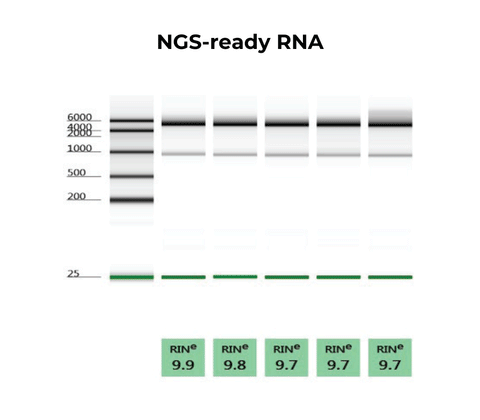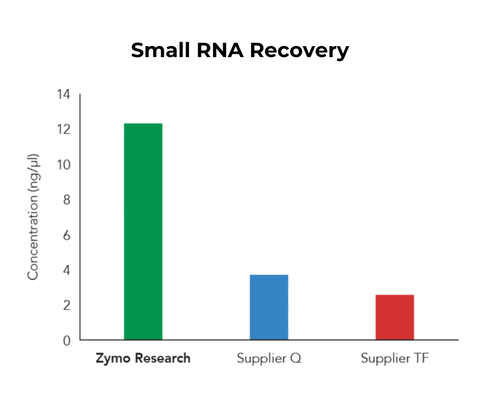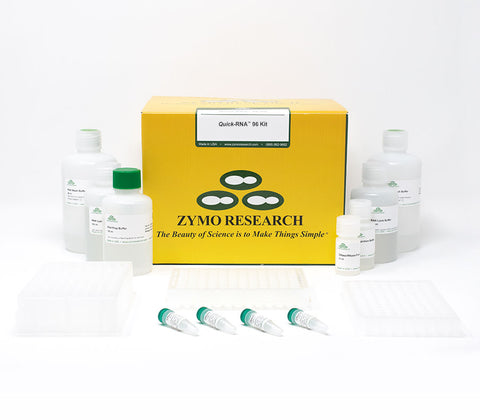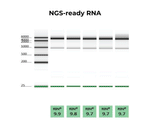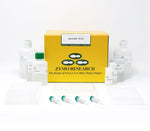Successfully Added to Cart
Customers also bought...
-
 DNA/RNA Shield (50 ml)Cat#: R1100-50DNA/RNA Shield reagent is a DNA and RNA stabilization solution for nucleic acids in any biological sample. This DNA and RNA stabilization solution preserves the...
DNA/RNA Shield (50 ml)Cat#: R1100-50DNA/RNA Shield reagent is a DNA and RNA stabilization solution for nucleic acids in any biological sample. This DNA and RNA stabilization solution preserves the... -
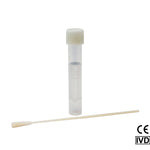 DNA/RNA Shield SafeCollect Swab Collection Kit, 1ml (1 collection kit)Cat#: R1160The DNA/RNA Shield SafeCollect Swab Collection Kit is a user-friendly collection kit for stabilizing the nucleic acid content of samples collected with a swab. DNA/RNA Shield completely inactivates harmful pathogens...
DNA/RNA Shield SafeCollect Swab Collection Kit, 1ml (1 collection kit)Cat#: R1160The DNA/RNA Shield SafeCollect Swab Collection Kit is a user-friendly collection kit for stabilizing the nucleic acid content of samples collected with a swab. DNA/RNA Shield completely inactivates harmful pathogens...
Format
Quick-RNA 96 Kit
Highlights
- Broad Range: Extract total RNA (including small/micro RNAs) from any sample.
- DNA-Free: Genomic DNA removal column and DNase I included.
- NGS-Ready: RNA is ready for all downstream applications including Next-Gen Sequencing, RT-qPCR, hybridization, etc.
Format
Quick-RNA 96 Kit
Highlights
- Broad Range: Extract total RNA (including small/micro RNAs) from any sample.
- DNA-Free: Genomic DNA removal column and DNase I included.
- NGS-Ready: RNA is ready for all downstream applications including Next-Gen Sequencing, RT-qPCR, hybridization, etc.
| Cat # | Name | Size | Price | Quantity |
|---|
| Cat # | Name | Size | Price | |
|---|---|---|---|---|
| R1060-1-100 | RNA Lysis Buffer | 100 ml | €179,40 | |
| R1060-1-50 | RNA Lysis Buffer | 50 ml | €93,90 | |
| R1003-3-48 | RNA Wash Buffer | 48 ml | €124,80 | |
| R1060-2-100 | RNA Prep Buffer | 100 ml | €144,90 | |
| W1001-10 | DNase/RNase-Free Water | 10 ml | €22,50 | |
| W1001-30 | DNase/RNase-Free Water | 30 ml | €26,10 | |
| E1010-1-16 | DNA Digestion Buffer | 16 mL | €34,50 | |
| C2001 | Silicon-A Plate | 2 Plates | €153,30 | |
| C2007-2 | 96-Well Plate Cover Foil | 2 Foils | €10,50 | |
| C2002 | Collection Plate | 2 Plates | €26,10 | |
| C2003 | Elution Plate | 2 Plates | €22,50 | |
Description
Performance
Technical Specifications
| Equipment | Centrifuge/rotor compatible with 96-well plates |
|---|---|
| Purity | RNA is ready for Next-Gen sequencing, RTPCR, microarray, hybridization, etc. A260/A280, A260/A230: >1.8. |
| Sample Source | Cells or tissue samples, yeast, plant or bacteria. Compatible with DNA/RNA Shield and RNAlater. |
| Size Range | Total RNA ≥ 17 nt |
| Yield | 10 µg RNA (binding capacity) ≥ 25 µl (elution volume) |
Resources
Documents
FAQ
Use the Quick-RNA Miniprep for cells and soft tissues. The “Plus” kit accommodates all sample types (cells, tissue, blood) and comes with DNA/RNA Shield (sample collection, transport, storage at ambient temperature).
Lyophilized DNase I is stable at room temperature. Once resuspended, store frozen aliquots. Minimize freeze thaw cycles as much as possible. Freeze thaw will lower DNase activity.
If the downstream application requires DNA-free RNA, we recommend performing the DNase I treatment.
Yes, the catalog number for the DNase I set (DNase and DNA Digestion Buffer) that we offer is E1010.
Yes. Use 80% ethanol as a substitute. RNA Wash Buffer is also sold separately.
Yes, this kit will isolate small/micro RNA’s ≥ 17 nucleotides.
Yes, samples in RNA Lysis Buffer are stable overnight at room temperature and can be stored frozen (-80C). Be sure to lyse and homogenize the sample well prior to freezing. Bring the sample to room temperature prior to RNA Purification.
Direct-zol is for samples stored/collected into TRIzol/similar reagents. Quick-RNA is for all other samples.
Yes, proteins can be acetone precipitated from the column flowthrough. Please see the Protein Purification appendix in the protocol.
| Input | Average RNA Yield |
|---|---|
| Cells | 10 µg (per 106 cells) |
| HeLa | 15 µg |
| High Yield Tissue (mouse) | ≥ 30 µg (per 10 mg) |
| Spleen | 30-50 µg |
| Liver | 40-60 µg |
| Low Yield Tissue (mouse) | ≤ 30 µg (per 10 mg) |
| Brain, Heart | 5-15 µg |
| Muscle | 5-20 µg |
| Lung | 10-20 µg |
| Intestine | 10-30 µg |
| Kidney | 20-30 µg |
| Whole Blood | (per 1 ml) |
| Porcine | 10-20 µg |
| Human | 2-10 µg |
Purity, RIN and/or any type of contamination can result from initial sample preparation (i.e., inefficient lysis of the sample). To improve, increase the volume of the lysis reagent (e.g., TRI Reagent/TRIzol or RNA Lysis Buffer).
- To ensure complete lysis, increase the volume of the lysis reagent (i.e., increase or titrate the volume of TRI Reagent/TRIzol or RNA Lysis Buffer). Lysate should be clear (not opaque or viscous). Pellet debris by centrifugation (if needed) and process the cleared supernatant.
- Prior to adding TRI Reagent/TRIzol or RNA Lysis Buffer, perform enzymatic treatment (Proteinase K; #D3001-2-20) and/or mechanical homogenization (bead beating with ZR BashingBead Lysis Tubes; #S6003) in DNA/RNA Shield (#R1100).
Cells: Pellet by centrifugation (500 x g - 5,000 x g) and remove RNAlater™ (supernatant). Proceed to Sample Preparation, see protocol.
Tissue: Transfer into a new tube with forceps and remove any excess RNAlater™. Proceed to Sample Preparation, see protocol.
Alternatively, for liquid samples from which RNAlater™ cannot be removed, add 1 volume of nuclease-free water (or PBS) to 1 volume liquid sample (1:1) and mix. Then add 4 volumes RNA Lysis Buffer to 1 volume sample/water (or PBS) mixture (4:1). Mix again and proceed to Total RNA Purification, see protocol.
Reviews
"RNA isolation from tissue culture cells used to be my most hated protocol - labor intensive, tedious, and the horrible smell of the BME used in the protocol. This kit is much faster and easier and no horrible smells! Both the RNA yield and the real time results are just as good as our previous kit."
Lisa G.
University of Virginia
"Amazing results, the only RNA extraction kit I ever buy now. In my opinion, there is no product on the market that is as good a value and as effective as this kit for plant tissue RNA extractions."
Erin B.
Occidental College
"Good price and easy to use, plus good quality. It is compatible to QIAGEN products RNeasy kit, but with reasonable price and equal quality. Especially the DNase is inexpensive and is included in the kit. No matter animal RNA, or plant RNA, or bacterial RNA, all could use with this one kit."
Xiaolu J.
Florida Atlantic University
Citations
Need help? Contact Us


